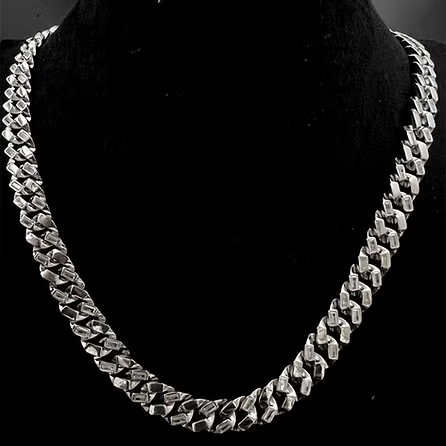Matar Mala vs. Other Beaded Jewellery: What Makes It Unique?
- writerforeverynich
- Mar 16
- 3 min read
Jewellery has always been of great cultural significance. Of the many styles of artwork, beaded jewellery enjoys a special place for its intricate designs and craftsmanship. One such piece of traditional jewellery is the Matar Mala. Its distinctive arrangement of beads and cultural significance give Matar Mala jewellery a clear identity as compared to other styles of beaded jewellery.
Beaded jewellery may include glass bead necklaces, pearl strings, or gemstone malas. Still, Matar Mala occupies its own place in terms of history, craftsmanship, and grace. The following article will delve into the Matar Mala's differences from other types of beaded jewellery.
A History of Matar Mala Jewellery
Matar Mala jewellery has been part of Indian traditions for centuries. The name "Matar Mala" derives from the round beads used in the design, which resemble green peas (matar). The original malas were made from gold, pearls, and precious stones, but over time, artisans made inroads in different materials to enable more popularly priced versions.
The jewellery was the pride of the royals and people of wealth; furthermore, it formed part of bridal jewellery in many communities in India. This design has stood the test of time and still carries cultural and historical importance.
Other forms of beaded jewellery have different origins. Glass bead jewellery has been made in Africa and Europe since time immemorial. Pearl necklaces have been treasured by royal collections in every corner of the world. And gemstone malas are used for spiritual and fashion purposes by many cultures.
The Unique Design of Matar Mala Jewellery
The Matar Mala has strong craftsmanship that sets it apart from other beaded jewellery. Each piece is meticulously crafted by hand, and beads are arranged uniformly. They are mostly round and smooth, which gives them a structured-yet-elegant facade.
Gold and pearl decorations often adorn Matar Mala pieces, providing opulence. Several designs have multiple layers of bead strands creating a layered effect. The symmetry and bead arrangement of Matar Mala do not resemble the styles of other beaded jewellery, where the shapes may differ in relation to each other or assorted sizes of beads are used.
Conversely, other beaded jewellery is thrown in one style or another. Glass bead necklaces display a riot of colour and are lightweight so that they can be worn casually. Pearl strings are delicate and simple, best suited for classy events. Gemstone malas have spiritual connotations whereby different stones represent different energies.
Cultural and Traditional Significance
Matar Mala is very much valued culturally and traditionally. In many Indian homes, it becomes a family heirloom and is handed down through generations. Matar Malas are often worn during religious ceremonies, weddings, and festive occasions; in certain Indian cultures, matars are part of the bridal set adorned by the bride-to-be, enhancing traditional glamour.
Other beaded jewellery types carry cultural meanings but differ by region and use; colourful bead necklaces are an African cultural identity and status symbol, whereas pearl necklaces in the West stand for sophistication and glam. Different cultures use gemstone malas in meditation and spiritual practices.
Modern Trends and Adaptation
Despite fashion making an impact, Matar Mala has retained its popularity. Nowadays, some designers are creating contemporary versions, combining traditional craftsmanship with modern interpretations. Silver beads, artificial pearls, and semi-precious stones are among some of the more contemporary versions and far more readily available.
This means Matar Mala is now "worn along with traditional attire or even with modern outfits." Women pair it with sarees, lehengas, and Indo-Western attires, which makes it a versatile adornment. Its demand has further grown due to the increasing awareness about handcrafted and heritage jewellery.
Other beaded-jewellery types have also evolved with fashion trends. Glass bead necklaces offer elaborate designs and flashy colours. Pearls have received a modern twist with innovative clasps and layering. Gemstone malas, once considered sacred, have acquired a life of their own in fashion.
Conclusion
Matar Mala is special among the types of beaded jewellery. Rich tradition, culture, and detailed workmanship are attributes that set it apart from necklaces made from glass beads, pearl strings, and gemstone malas. And yet, though other forms of beaded jewellery may equally have their glamour and purpose, Matar Mala continues to be an embodiment of tradition and grace.
But its appeal lies in its timelessness. An adornment that upholds beauty, whether donned for a special occasion or often merely as a fashion statement, continues to be as dear to its spotlight. A combination of heritage and modern style makes it a very choice of concern among jewellery lovers.




Comments